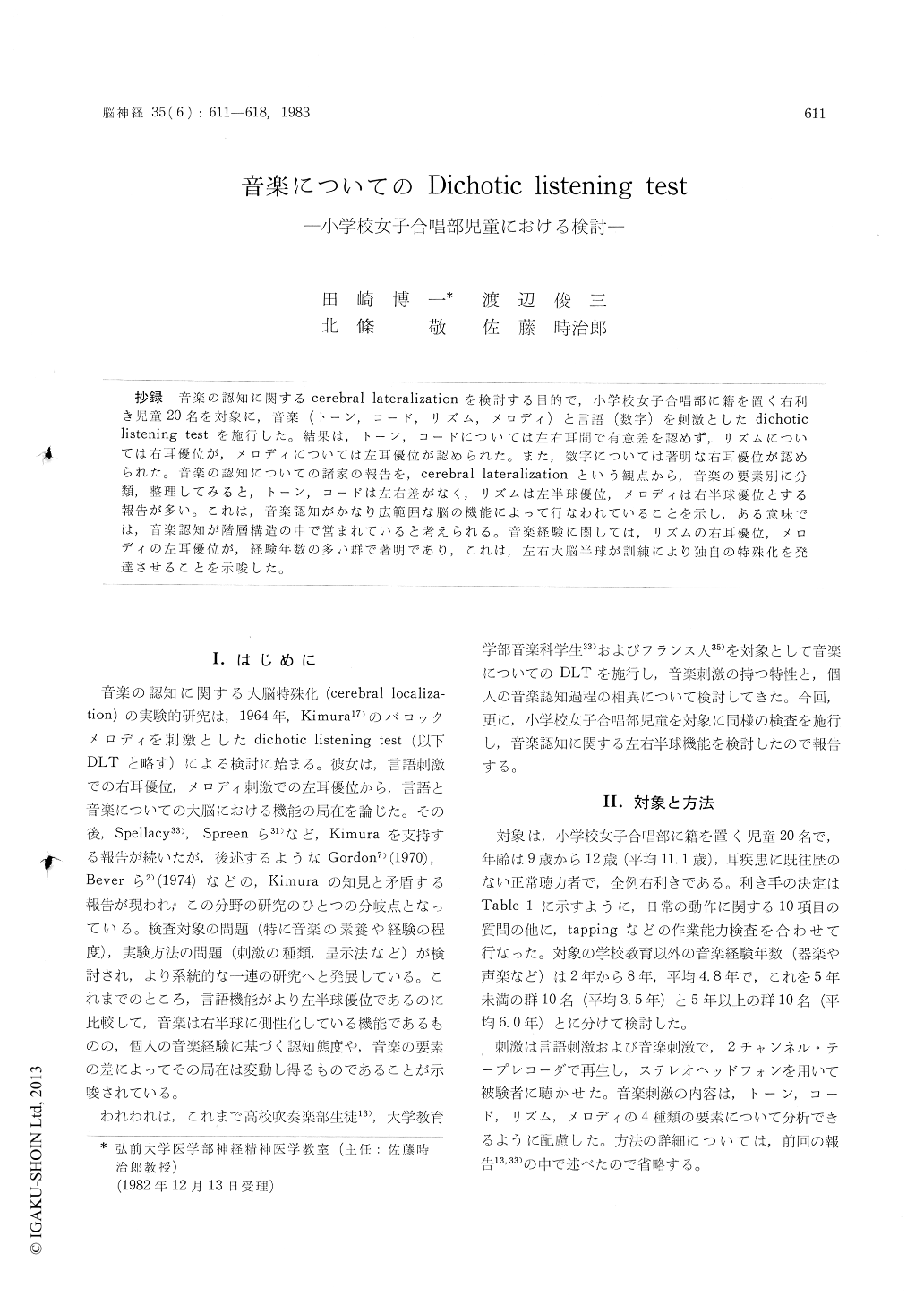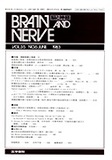Japanese
English
- 有料閲覧
- Abstract 文献概要
- 1ページ目 Look Inside
抄録 音楽の認知に関するcerebral lateralizationを検討する目的で,小学校女子合唱部に籍を置く右利き児童20名を対象に,音楽(トーン,コード,リズム,メロディ)と言語(数字)を刺激としたdichoticlistening testを施行した。結果は,トーン,コードについては左右耳間で有意差を認めず,リズムについては右耳優位が,メロディについては左耳優位が認められた。また,数字については著明な右耳優位が認められた。音楽の認知についての諸家の報告を,cerelbral lateralizationという観点から,音楽の要素別に分類,整理してみると,トーン,コードは左右差がなく,リズムは左半球優位,メロディは右半球優位とする報告が多い。これは,音楽認知がかなり広範囲な脳の機能によって行なわれていることを示し,ある意味では,音楽認知が階層構造の中で営まれていると考えられる。音楽経験に関しては,リズムの右耳優位,メロディの左耳優位が,経験年数の多い群で著明であり,これは,左右大脳半球が訓練により独自の特殊化を発達させることを示唆した。
Evidence for the cerebral dominance of musical passage has been largely provided by the use of the dichotic listening test. Kimura found a left ear advantage for instrumental melodies using a recognition paragram. This was interpreted as a right hemisphere superiority in processing melo-dies. Subsequently, her observation has been con-firmed by various studies.
However there are conflifting reports regarding the above finding. The cerebral dominance in the perception of music is not fixed, and it varies with conditions of the experiment such as stimuli and subjects. It may noe be that one cerebral hemisphere is "dominant" for music, but rather than both hemispheres are involved.
In this report, dichotic pairs of musical sound were presented to 20 right-handed primary school girls belonging to the chorus group. Originally recorded tones, chords, rhythms, melodies and digits were presented dichotically. The tests com-pared the abilities of each ear to recognize double auditory stimuli presented simultaneously to both ears.
As for musical stimuli, in the rhythm tests, the mean scores for the right ear were significantly higher than for the left ear. In the melody tests, the score for the left ear was significantly higherthan for the right. In the tone tests and chord tests, the mean scores for the two ears were nearly the same.
As for verbal stimuli, in the recognition of digits, a significant right ear preference was shown.
As for the musical training, the right ear superiority in the rhythm tests and the left ear superiority in the melody tests were more signi-ficant for trained subjects. These findings suggest that both hemispheres may respectively develop peculiar specializations by training.
From the point of stimulus-property, it was suggested that the left hemisphere was specialized for serial and analytic processing the right hemi-sphere was more adapted for holistic and syn-thetic processing.

Copyright © 1983, Igaku-Shoin Ltd. All rights reserved.


